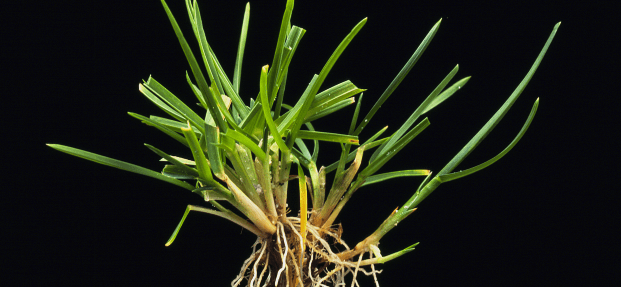Kentucky Bluegrass (Poa pratensis) can be identified by several distinctive features. It typically forms a dense, lush turf with fine-textured, dark green blades. The leaves are narrow, around 2-4 mm wide, and have a characteristic boat-shaped tip. The leaf blades are smooth and have a prominent midrib. The grass spreads through underground rhizomes, creating a thick, mat-like growth. During the flowering season, it produces loose, open panicles with tiny spikelets that are often purplish at the base. Kentucky Bluegrass prefers well-drained soils and is commonly found in lawns, athletic fields, and pastures in temperate climates. These identifying characteristics—fine texture, boat-shaped leaf tips, and rhizomatous growth—help distinguish it from other grass species.
